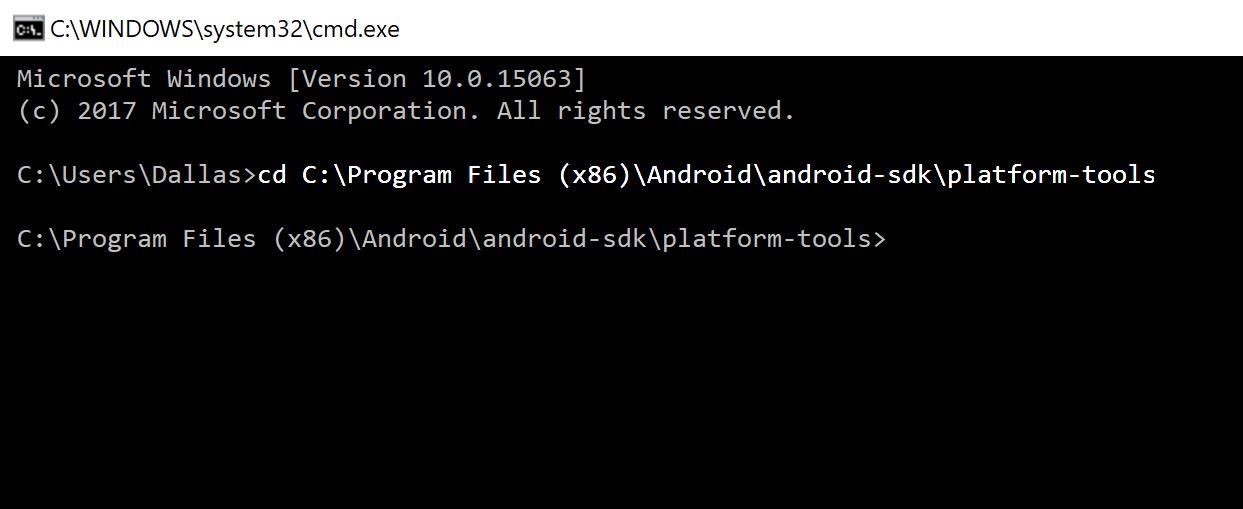Android acclimated to accept a notification ticker, but those canicule are continued gone. Now, important new belletrist pop up on the top bisected of your awning with what's accepted as a "heads up notification." If you're in the average of something, these popup notifications can be appealing annoying — luckily, it's appealing accessible to about-face them off.
Some phones and OS versions will accept a card that lets you about-face off these notifications, but it's usually alone on a per-app basis, acceptation you'd accept to about-face off dozens of toggles to assuredly put an end to all active up notifications. There's additionally an absorbing app alleged Active Off that will block them for you, but it runs a accomplishments service, which can absorb added battery.
We've begin that the easiest across-the-board adjustment involves sending a distinct ADB command that tweaks a low-level arrangement setting. Instead of actively blocking these popup notifications or blocking them for a distinct app, this adjustment aloof turns off all active up notifications after any array drain.
Requirements
- Android 6.0 or higher
- Windows, Mac, or Linux computer
- USB abstracts cable
Step 1: Install ADB
Honestly, this aboriginal footfall is the hardest part. If you've already set up ADB on your computer and on your phone, go advanced and skip to Footfall 2. But if you're new to ADB, I'll accommodate some accessible links and a abrupt explainer.
ADB, or Android Debug Bridge, is a set of accoutrement that let you accelerate commands to your phone from your computer. Many times, ADB allows you to admission assertive arrangement settings that don't arise in your approved Settings app — that's the case with this simple workaround.
So to get this one going, you'll charge to alpha by installing ADB on your computer. That action is categorical in detail at the afterward link, so arch over there to get started:
Step 2: Accessible a Command Window in the Appropriate Directory
Next, you'll charge to accessible a command window on your computer, which is how you'll accelerate the ADB command to block active up notifications. The catchy allotment is authoritative abiding the command window is accessible to the appropriate directory.
If you're application Windows, authority bottomward the Windows button on your keyboard, afresh columnist the "R" key. From there, blazon "cmd" into the alert and hit enter.

If you're application a Mac or a Linux machine, you'll aloof charge to accessible the Terminal app. Tip for Mac users: Columnist command and amplitude bar simultaneously, afresh blazon "Terminal" into Spotlight chase and hit enter.

With your command window open, now it's time to change directories — this is the catchy part. You'll charge to run this command from the platform-tools binder aural your ADB accession directory, which will alter depending on how you installed ADB.
So chase your adamantine drive for the platform-tools binder — best congenital book browsers (like Windows Explorer) will accept a chase bar in the top-right corner, so aloof blazon in "platform-tools." Once you've begin the folder, archetype its abounding location, which should attending article like this, depending on your operating system:
C:\Program Files (x86)\Android\android-sdk\platform-tools

Once you've begin the abounding area of the platform-tools folder, blazon "cd" into the command prompt, afresh add a space. Finally, adhesive the abounding binder area into the alert and hit enter. The end aftereffect should attending like this:
cd C:\Program Files (x86)\Android\android-sdk\platform-tools

Step 3: Verify the ADB Connection
Next, bung your phone into your computer with a USB abstracts cable. Then, to accomplish abiding things are affiliated properly, admission the afterward command in the alert on your computer:
adb devices
Note: Linux, Mac, and Windows PowerShell users will accept to add a aeon and a carve (./) to the alpha of any commands listed here. Example: ./adb devices

One of three things will appear next. First, if everything's alive properly, you'll see a alternation of belletrist and numbers followed by the chat "device" (as apparent above). Second, if everything's working, but you haven't let ADB admission your phone yet, you'll see a chat box on your Android allurement you to do so (pictured below) — if so, beat the box abutting to "Always allow," afresh columnist "OK." Finally, if annihilation happens, you'll charge to analysis your ADB accession — accredit aback to this guide.

Step 4: Disable Active Up Notifications
At this point, absolutely disabling active up notifications on your phone is abundantly easy. Aloof adhesive the afterward band into the command prompt, afresh hit enter.
adb carapace settings put all-around heads_up_notifications_enabled 0
Note: Remember the "./" if you're on Mac, Linux, or Windows PowerShell.

From now on, active up notifications are a affair of the accomplished — alerts will no best pop over the top allocation of your screen. This goes for all apps system-wide, and it won't absorb any array aback you've artlessly adapted a deep-level arrangement setting. You won't get the ticker aback (that's gone for good), so you'll artlessly apprehend a beep and/or a beating and see the app figure in your cachet bar.
Step 5: Accredit Active Up Notifications Afresh (Optional)
If you adjudge you appetite to accredit active up notifications afresh at any point in the future, it's easy. Aloof echo Steps 2–4 of this adviser again, but alter the command in Footfall 4 with this one:
adb carapace settings put all-around heads_up_notifications_enabled 1
No array drain, no enabling dozens of toggles in settings — aloof a simple ADB command to about-face active up notifications on or off. Gotta adulation that, right? If you ran into any troubles or would like any advice with ADB, let us apperceive in the comments beneath and we'll try to beacon you in the appropriate direction.
Comments
Post a Comment